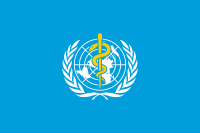
Photo from wikipedia
Human and mechanical simulations are used to teach and assess clinical competencies in medical education. In 2014, the National Board of Podiatric Medical Examiners implemented the Clinical Skills Patient Encounter,… Click to show full abstract
Human and mechanical simulations are used to teach and assess clinical competencies in medical education. In 2014, the National Board of Podiatric Medical Examiners implemented the Clinical Skills Patient Encounter, an examination using standardized patients. Similar clinical skills examinations already existed as part of medical and osteopathic licensure examinations. The purpose of this study was to assess the use of simulation-based education in the nine colleges of podiatric medicine in the United States to inform podiatric clinical faculty and other stakeholders about current trends within the podiatric education system. In 2019, the Clinical Skills Patient Encounter committee of the National Board of Podiatric Medical Examiners developed a survey and contacted each podiatric school to voluntarily participate. The mailed survey instrument gathered information on patient simulation modalities, years used, clinical content application, simulation program administration, facilities and equipment available, and the role of simulation educators. All nine schools participated anonymously. The survey showed that simulation modalities were used in all of the schools during the first 3 years, although there was considerable variance in their use.
Journal Title: Journal of the American Podiatric Medical Association
Year Published: 2022
Link to full text (if available)
Share on Social Media: Sign Up to like & get
recommendations!